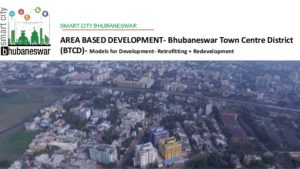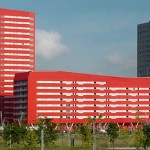Yale University ~ Photogrammar – The Great Depression
Origins
After a series of setbacks in the courts that repealed many of the First New Deal’s program, President Roosevelt pursued a new set of initiatives including the Resettlement Administration in 1935. It was charged with aiding the poorest third of farmers displaced by the depression and particularly focused on resettlement on viable lands and providing low-interest loans. Directed by Rexford Tugwell, a Columbia University economist, the RA came under immediate scrutiny. Realizing the battle for public opinion had begun, Tugwell hired his former student Roy Stryker to lead the Historic Section within the Information Division of the RA, which in 1937 was moved to the FSA.
Mission
In order to build support for and justify government programs, the Historical Section set out to document America, often at her most vulnerable, and the successful administration of relief service. The Farm Security Administration—Office of War Information (FSA-OWI) produced some of the most iconic images of the Great Depression and World War II and included photographers such as Dorothea Lange, Walker Evans, and Arthur Rothstein who shaped the visual culture of the era both in its moment and in American memory. Unit photographers were sent across the country. The negatives were sent to Washington, DC. The growing collection came to be known as “The File.” With the United State’s entry into WWII, the unit moved into the Office of War Information and the collection became known as the FSA-OWI File.
170.000 Photographs documenting the Great Depression
Go to: http://photogrammar.yale.edu/
Smart City Makeover For Slums In Bhubaneswar Township Area
 BHUBANESHWAR: The slum pockets falling under Bhubaneswar Town Centre District (BTCD), will wear a new look, according to the concept of Smart City Mission.
BHUBANESHWAR: The slum pockets falling under Bhubaneswar Town Centre District (BTCD), will wear a new look, according to the concept of Smart City Mission.
The BTCD is spread over 985 acres and there are 26 slums in the zone. The BTCD will be a model town of the city to be developed under the mission. The Bhubaneswar Municipal Corporation (BMC) has started validation (enumeration) camps to identify the genuine slum dwellers so that they are provided with concrete buildings.
Read more: http://realty.economictimes.indiatimes.com/hubaneswar-township-area
Moladi ~ Conventional Building Methods Not Suited To African Conditions
 Housing and construction systems developer Moladi says its low-cost housing system, comprising plastic formwork panels and a cement admixture, is widely embraced throughout Africa, as it has been specifically designed to meet the requirements of the African market.
Housing and construction systems developer Moladi says its low-cost housing system, comprising plastic formwork panels and a cement admixture, is widely embraced throughout Africa, as it has been specifically designed to meet the requirements of the African market.
Moladi founder and CEO Hennie Botes says the system alleviates challenges associated with conventional building methods, including excessive costs, labour-intensive processes and the availability of materials. He notes that while the aforementioned challenges are not specific to African countries, they are exacerbated by other uniquely African obstacles.
Read more: http://www.designmind.co.za/conventional-building-methods
Moladi ~ Push To Supply Longer-Term Lodgings
 Housing and building construction systems company Moladi believes mining companies, which are currently dealing with the commodities downturn, should invest in longer-term building solutions for the purpose of on-site accommodation, as opposed to more traditional prefabricated modular buildings.
Housing and building construction systems company Moladi believes mining companies, which are currently dealing with the commodities downturn, should invest in longer-term building solutions for the purpose of on-site accommodation, as opposed to more traditional prefabricated modular buildings.
Thus, the company is targeting the mining industry for the provision of long-term accommodation, says moladi founder and CEO Hennie Botes.
The Port Elizabeth-based company’s buildings offer mines investment in permanent structures, which can be used for a range of applications, from accommodation to storage, that are secure, unlike temporary modular solutions.
Further, the company emphasises that its focus on providing a housing solution that is a quicker and a cheaper method of producing better-quality structures that are “far more durable and require less maintenance” will benefit mines and their workers.
Moladi uses mine by-products such as mine slag and crusher dust, which act as a stable level filler, as bulk building material to construct its long-term housing solution, reducing the cost of construction.
He adds that the company can construct buildings that are more durable than prefabricated and traditional brick and mortar building solutions.
Moladi’s green building method involves the use of removable, reusable, recyclable and lightweight plastic formwork moulds that are filled with mortar consisting of sand and cement.
The walls of Moladi’s buildings have a strength of 16 megapascal (MPa), compared with traditional brick walls that start at 2 MPa. “Our walls are up to six to eight times stronger than brick and cement,” adds Botes.
Read more: http://www.designmind.co.za/push-to-supply-longer-term-lodgings
Lisa Novacek ~ Empower Shack
Empower Shack from Urban-Think Tank on Vimeo.
The Empower Shack project is directed by Urban-Think Tank and the local NGO Ikhayalami in collaboration with the BT-Section community and associated local and international partners. The project aims to develop a comprehensive and sustainable informal settlement upgrading through addressing there core components:
- a two-story housing prototype,
- participatory spatial planning,
- ecological landscape management,
- integrated livelihoods programming,
There is an ongoing pilot phase is focused on a cluster of 68 houses within the BT-Section of Khayelitsha to be completed in 2017.
Read more: http://futurecapetown.com/watch-empower-shack
Brandon G. Donnelly ~ How Megacities Are Changing The Map Of The World
In advance of his new book, titled Connectography, Parag Khanna recently delivered an interesting TED Talk called, How megacities are changing the map of the world. It’s about 20 minutes long.
A lot of what is covered won’t be new to this audience, but I like how he talks about the importance of urban connectivity, the shift from political to functional geography, and the idea that, in a megacity world, countries can actually be the suburbs of some cities.
One thing you might notice about the talk is how he glosses over both Canada and Europe. This is a reminder to me that if Canadian cities are going to continue to compete against the emerging megacities of the world, we are going to need to think at the scale of the megalopolis. And a big part of that means a focus on extra-urban connectivity.
Read more: http://brandondonnelly.com/how-megacities



